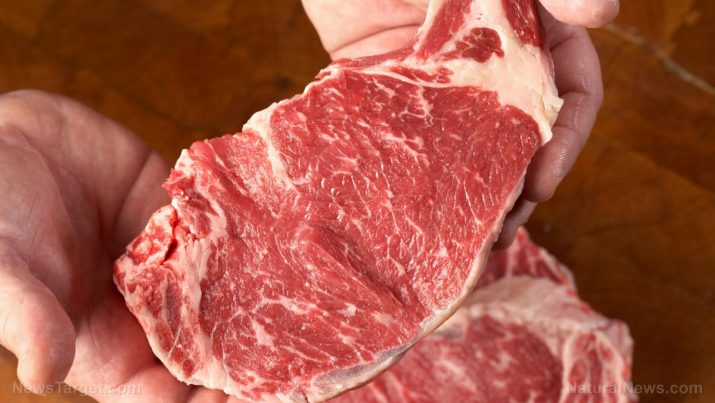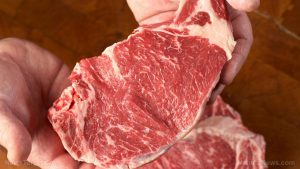
Creutzfeldt-Jakob disease – causes, side effects and treatments at NaturalPedia.com
Wednesday, February 21, 2018 by Ralph Flores
http://www.naturalpedia.com/creutzfeldt-jakob-disease-causes-side-effects-and-treatments-at-naturalpedia-com.html

Creutzfeldt-Jakob disease (CJD) is a degenerative brain disorder. It is a rare condition – affecting only one person in one million people around the world each year – and it usually affects older adults aged 60 and above. However, the disease is “invariably fatal,” with most people who suffer from the condition dying within a year.
CJD has three major categories:
- Sporadic CJD occurs whether or not the person has risk factors associated with the disease. This is the most common type of CJD, accounting for at least 85 percent of the cases.
- Hereditary CJD, as the name implies, is a condition that is linked with a history of CJD in the family or a genetic mutation connected to it. In the U.S., up to 10 percent of CJD cases are hereditary.
- Acquired (or Iatrogenic) CJD means that the disease is transmitted to the brain or nervous system. Experts believe that this is because of certain medical procedures. However, less than a percent of cases are classified as acquired CJD.
CJD is known as a human prion disease. The condition, along with other diseases such as the Fatal Familial Insomnia and Kuru, are collectively known as transmissible spongiform encephalopathies (TSEs) – rare, progressive, neurodegenerative disorders that are seen in both humans and animals. A quality of prion disease is that it has a very long incubation period and that the condition will not trigger an inflammatory response.
Prions are abnormal and pathogenic agents that cause an unusual reaction in the prion proteins that are found in the brain. When this happens, the brain will ultimately take damage, and this will allow the condition to progress rapidly, which will ultimately be fatal.
Cattle are known to contract a prion disease – bovine spongiform encephalopathy (BSE) or “mad cow disease.” When a person consumes meat from a cow that is infected, he may develop what is called variant CJD. However, further studies are needed to understand the effects of the disease on humans.

Known risk factors and symptoms of Creutzfeldt-Jakob disease
The etiology of CJD is not fully defined, and it has been known to occur with no underlying cause. Still, some factors could determine the likelihood of getting the disease.
- Age – Sporadic CJD happens at around 60 years of age. The onset of familial CJD tends to occur earlier, while variant CJD may even affect people as early as their late 20s.
- Genetics – People who have family members who have had CJD or have a genetic mutation for CJD are more likely to have the condition later in life. This may also increase the risk of transmission from exposure to contaminated tissue or meat.
- Exposure to contaminated tissue – People who have had procedures that involve the brain such as the pituitary gland or tissue grafting may get iatrogenic CJD.
Getting variable CJD from contaminated beef can be difficult to determine, as most countries have implemented strict regulations on food safety.
Signs and symptoms of CJD include the following.
- A decline in cognitive ability and memory
- Personality changes
- Loss of balance and gait
- Slurred speech
- Problems with vision, which will lead to blindness
- Involuntary muscle movement
- Progressive loss of brain function and mobility
People who are diagnosed with CJD die within a year, generally because of complications. This is the result of the later stages of the disease which make them prone to infection.
Body systems affected by Creutzfeldt-Jakob disease
CJD is a disease that primarily affects the brain; however, later symptoms and complications will affect all bodily functions.
Food items or nutrients that may prevent or relieve Creutzfeldt-Jakob disease
Variable CJD could be avoided by skipping beef altogether in your diet and replacing it with poultry and fish. However, if you must consume beef, it’s best to know the origin of the meat. Do not eat meat that comes from an area that’s reported to have mad cow disease, and avoid getting cuts that are located near the brain tissue or spinal cord.
Treatment and management options for Creutzfeldt-Jakob disease
There are no effective treatments against CJD at the moment; however, medications such as quinacrine are known to slow down the rate of decline in some patients. Additionally, supportive care is given to address complications such as myoclonus (involuntary muscle movement) and pain.
Where to learn more
- Mad cow disease detected in U.S. dairy cow; South Korea retailers halt US beef sales
- Careless hospital procedures could be spreading Alzheimer’s to patients
- Mad cow disease strikes Virginia man
- Mad cow disease on the rise
- New research: sporadic type of Creutzfeldt-Jakob disease (mad cow) results from surgery
Summary
Creutzfeldt-Jakob disease (CJD) is a rare, degenerative brain disorder. However, the disease is “invariably fatal,” with most people who suffer from the condition dying within a year.
CJD is known as a human prion disease – rare, progressive, neurodegenerative disorders that are seen in both humans and animals.
The etiology of CJD is not fully defined, and it has been known to occur with no underlying cause. It primarily affects the brain; however, later symptoms and complications will affect all bodily functions.
Variable CJD could be prevented by skipping beef altogether in your diet and replacing it with poultry and fish.
There are no effective treatments against CJD at the moment; however, medications are known to slow down the rate of decline in some patients.
Sources include:
Tagged Under: Tags: Creutzfeldt-Jakob disease





